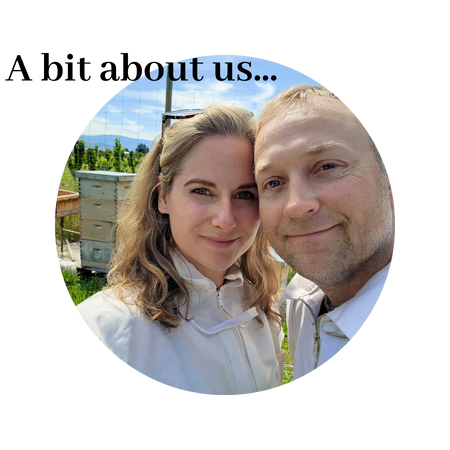In a colony, there are several castes. These include the Queen bee, the drone bee and the worker bee. Each caste has a very special and specific job, and we are going to explore the job description of the worker bee.
The worker bee spends nearly every hour of her life working for the good of the honey bee colony. All are females and all sisters and all are the hardest workers.
Worker Bee Responsibilities
Workers perform an insanely huge list of jobs, and these include:
- collect pollen on their pollen baskets
- collect nectar
- produce wax/secrete wax
- make bee bread
- they are nurse bees and are queen attendants
- maintain honey supply
- guard the hive entrance
- worker bees kill (or try to kill) any threat to the hive by stinging
- take care of honey sealing and wax capping
- and much more
That's a lot of work.
A worker bee is the female offspring of the Queen bee of her honey bee hive. They look after all the colony needs from cleaning to food gathering, known as foraging.
Let's learn more about these busy little friends who have a very important job to do.

What is a Worker Bee?
There can be as many as 60,000 honey bee workers in a bee colony.
Because the Queen mates with around 12 drones, some of the workers will be super sisters, meaning they have the same drone father.
This creates a very interesting colony dynamic. Studies have shown that depending on the father (also called a subfamily), some worker bees will specialize in certain tasks. That specialization may be in colony defense, pollen collection, nectar collection, hive hygiene, etc.
Healthy honey bee colonies have a good variety of task specializations and some beekeepers breed Queens that have certain desirable specializations in their worker bees.

Worker Bee Tasks
The tasks that a worker honey bee does are pretty diverse. They include:
- Cell cleaning
- Cell capping
- Brood and Queen tending
- Honeycomb building
- Grooming
- Food handling
- Ventilation
- Defense
- Foraging
The worker honey bee generally doesn't do all these tasks simultaneously, but rather, does some of these tasks at one point in its life in stages.
Worker Bee Task Stages
As worker bees develop, they move from one task to another, starting as nurse bees (the technical term for this is called 'temporal polyethism'). It is generally accepted that the task stages of this bee looks like this:
- Week 1 - Cell cleaning
- Week 2 - Receive food, feed larvae (new worker bee larvae included), feed developing Queens royal jelly, build honey comb
- Week 3 - Start moving outside the hive by participating in defense and removing dead bees and waste material
- Week 4 - Forage for nectar, pollen, water, propolis and bring it back to the hive
Sadly, foraging is basically the end of a honey bee worker's life. Its just too dangerous out in the big world for young bees, so the older worker bees naturally move into this role until the end of their lives.
This week by week task system looks nice and clean but not every single bee goes through it perfectly like this. It is a basic guideline and bees do change their tasking based on age.
In general, worker bees move from indoor tasks to outdoor tasks. In beekeeper lingo they grow from a nurse bee (they all start off as nurse bees) to foraging bees (older bees). These bees will also do whatever is needed; so if there is a great need for something (say drawing wax from their wax glands) most worker bees will focus on that.
Resting And Patrolling
Another thing worker bees to a lot of is resting and patrolling. We believe they are assessing the colony conditions and are in a rest state if there is a sudden colony need for a bust of energy.
Here are some other articles you may be interested in reading:
Everything Needed To Start BEEKEEPING
Where To Buy Beeswax Directly From Reputable Beekeepers
How To Make Beeswax Wraps | INSTRUCTIONS
Did you like this article?
❤️ Here's how you can support our blog:
My name is Linnea and I am a backyard gardening enthusiast! Along with my husband and our two kids (and chickens, ducks and our little dog Izzy). Our hobby - growing our own food and making our meals from scratch. My blog, The Farmers Cupboard, is the website that blossomed from that passion. I love every second I spend sharing our hobby with like minded backyard growers.
It's easy to support my blog, and it is so appreciated. Please SHARE an article somewhere, pin a photo to your Pinterest board, follow on any of our social medias or sign up for our newsletter! That's it!
These little things help our blog grow and allow us to continue doing what we love: growing good food and sharing what we learn.
PINTEREST PASSIONATE? We're opening up our cupboard to you!
Click on the pin below made just for you. It will bring you right to my little Pinterest community, where I would love for you to FOLLOW The Farmers Cupboard and see all of our gardening and backyard dream ideas!
Let's grow good things together!

Sources:
Michener, C.D. 1974. The Social Behavior of the Bees: A Comparative Study. Cambridge, MA: The Belknap Press of Harvard University Press.
Winston, M.L. 1987. The Biology of the Honey Bee. Cambridge, MA: Harvard University Press.











0 comments